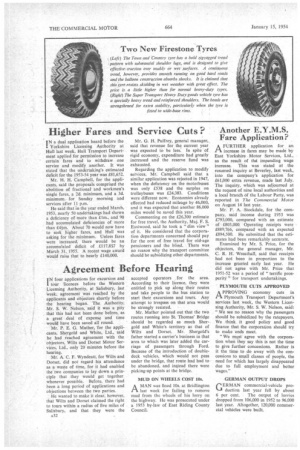Another E.Y.M.S. Fare Application?
Page 34

If you've noticed an error in this article please click here to report it so we can fix it.
AFURTHER application for an increase in fares may be made by East Yorkshire Motor Services, Ltd., as the result of thri. impending wage increase. This was stated at the resumed inquiry at Beverley, last week, into the company's application for £61,000 extra revenue, made last July. The inquiry, which was adjourned at the request of nine local authorities and a local branch of the Labour Party, was reported in The Commercial • Motor on August 14 last year.
Mr. F. A. Stockdale, for the company, said income during 1953 was £795,000, compared with an estimate of £803,000. Operating receipts were £889,766, compared with an expected £894,500. He submitted that the estimates had been remarkably accurate.
Examined by Mr. S. Price, for the objectors, the general manager, Mr. C. R. H. Wreathall, said that receipts had not been in proportion to the increase granted early last year. He did not agree with Mr. Price that 1951-52 was a period of "terrific prosperity for transport undertakings.
PLYMOUTH CUTS APPROVED
A PPROVING economy cuts in
Plymouth Transport Department's services last week, the Western Licensing Authority, Mr. S. W. Nelson, said: "We see no reason why the passengers should be subsidized by the ratepayers. We think it good policy and good finance that the corporation should try to make ends meet.
"We must agree with the corporation when they say this is not the time to give further concessions. Rather is it the time to do away with the concessions to small classes of people, the need for which has largely disappeared due to full employment and better wages."
GERMAN OUTPUT DROPS
GERMAN commercial-vehicle production last year fell by about
6 per cent. The output of lorries dropped from 106,000 in 1952 to 96,000 last year. Altogether, 120,000 conunercial vehicles were built.




































































































